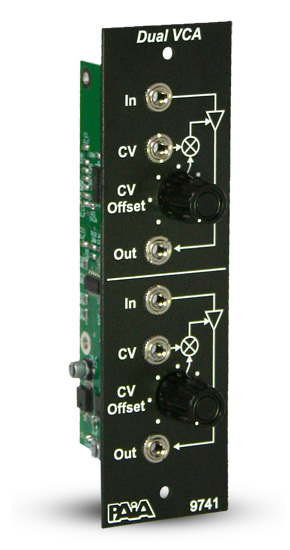 PAiA has introduced a new line of modular synthesizer kits that build on the classic designs of company founder John Simonton.
PAiA has introduced a new line of modular synthesizer kits that build on the classic designs of company founder John Simonton.
PAiA is well-known to older synth DIY’ers, because the company was one of the first to make inexpensive modular synth kits in the 1970s.
The new 9700-series modules are designed to be easy to build, inexpensive and offer performance sufficient for high-fidelity sound processing. And, with kits starting at about $30, they’ve definitely succeeded in making the modules affordable.
Initial modules include:
- 9741K Dual VCA Kit
- 9744K CV Source + Attenuator/Mixer Kit
- 9745K Mixer Kit
- 9746K Patch Bay Kit
- 9747K Passive Mixer/Splitter Kit
- 9748K Balanced Modulator Kit
- 9751K Noise Source Kit
- 9752K Sample and Hold/Gate and Hold Kit
- 9753K Envelope Follower Kit
- 9754K Preamplifier Kit
- 9756K Linear to Exponential Converter + Inverter Kit
The new PAiA modular synth kits look like an interesting new option for modular synthesists.
We’d like to see them offer the kits in MOTM and Eurorack formats, though.
If you’ve built any of the new PAiA modular synth kits, leave a comment with your thoughts!
PAiA’s final set of design goal for the new 9700-series modules are:
- Standard, basic, simple elements in a variety of functions
- Compatible and/or easily adaptable to almost all modular synthesizer
systems in:- signal levels
- control voltages
- supply voltages
- Inexpensive
- Durable & mechanically simple
- Extremely easy to build
- Option for affordable ready-made product
- Premium fidelity in signal path
- Compact & low-power
- Low cost, comparable to original 2720/4700-series pricing
- Easily adapted to fit any modular synthesizer format
- Additional packaging and power options.
Each of the circuits employ the following features to improve performance and reliability:
- Only high-quality capacitors are used in the signal path, but these components are provided as through-hole components so that owners may replace them with even more esoteric components as they may choose to suit their preference.
- Attention is paid to signal fidelity throughout the system:
- low-distortion op-amps
- direct-coupled amplification wherever possible
- local linear power regulation
- low-noise layout
- compact, double-sided boards with ground planes
- excellent decoupling
- system star grounding throughout
- SMT components, where used, employ larger packages (0805, SO-DIP, SOT-23, etc.)
- Extremely limited point-to-point wiring
- power harness is pre-wired
- Power inputs to each modules are regulated (with bypass) and protected against over-voltage.
